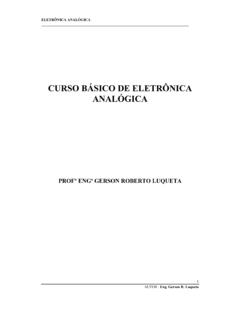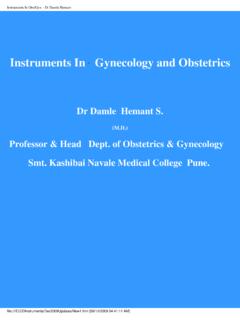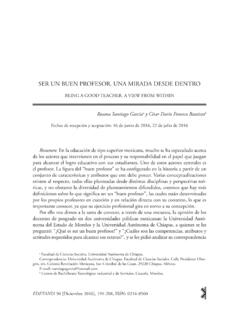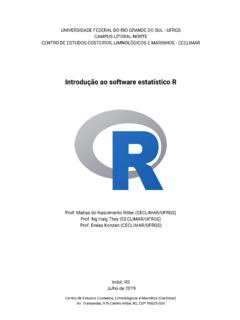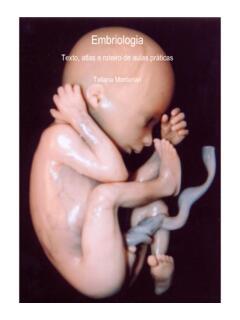Transcription of Destinos: 1-26 The Main Grammar Points, and Exercises with ...
1 Destinos: 1-26 The Main GrammarPoints, andExercises withAnswer Key2 TABLE OF CONTENTSG rammarI. Regular Verbs: Present Tense .. , Estar, and Hay .. 4 III. Articles, Nouns and Adjectives .. and Conocer ..7V. Interrogatives ..7VI. A Note About Stem-changing Verbs .. 8 VII. The Preterite Indicative Tense ..9 VIII. The Imperfect Indicative Tense .. 12IX. The Preterite and Imperfect Tenses Compared .. and Some Other Similar Verbs.. and Para .. 20 XII. Subject and Object Pronouns ..22 XIII. Affirmative and Negative Words ..25 XIV. Equal and Unequal Comparisons .. + que in Time Expressions ..29 XVI. Progressive Tenses ..31 XVII. Idioms with Tener .. 33 XVIII. A Few Additional Uses of the Infinitive .. 35 ExercisesI. Regular Verbs: Present Tense .. , Estar, and Hay ..37 III. Adjectives, Including Possessives andDemonstratives .. and Conocer .. 39V. Present Tense: Irregular Verbs.
2 403VI. Interrogatives .. 41 VII. Present Tense: Stem-changing Verbs.. 42 VIII. Preterite Tense: Regular Verbs .. 44IX. Preterite Tense: Irregular Verbs .. 45X. Preterite Tense: Stem-changing Verbs .. 47XI. Imperfect Tense .. 47 XII. Preterite and Imperfect (Sentences) .. 49 XIII. Preterite and Imperfect (Pragraphs) .. 50 XIV. Verbs With Different Meanings in Preterite andImperfect .. 52XV. Gustar .. and Para .. 53 XVII. Object Pronouns .. 54 XVIII. Affirmative and Negative Words .. 57 XIX. Comparisons .. + que Constructions .. 59 XXI. A Few Additional Uses of the Infinitive .. 59 Answer Key .. 60 Verbs from Destinos, 1-26 ..694I. REGULAR VERBS: PRESENT TENSE entr-AR beb-ER escrib-IRentroentramosbebo bebemosescribo escribimosentrasentr isbebes beb isescribes escrib sentraentranbebe bebenescribe escriben**This, and all other verb information you will need in this course canbe found in Appendix 2: Verb Charts, which begins on page 511 of theDestinos SER, ESTAR and HAYSERESTAR soysomosestoyestamoseressoisest sest isessonest sonSome uses of ser: to express nationality:Ella es peruana.
3 With de, to express origin:Soy de Per . to tell time:Son las dos y media de la tarde. with de, to express possession:La chaqueta es de Pablo. to identify people, places and things: Qu es esto?Es una manzana. In impersonal expressions such as es importante, es obvio, es l stima, es cierto, etc. after para, to tell for whom or what something is intended:Esta carta es para ella. after adjectives, to describe basic characteristics:Ella es alta, y es uses of estar: to describe conditions that are not inherent:Estoy cansada. Este caf est caliente; no est fr o. (BUT: El fuego es caliente [inherentcharacteristic]) with en, to convey location:Est n en la biblioteca; no est n en extremely useful expression can translate either as there is or there are: Hay dos maestras en esa clase. There are two teachers in that un alumno que no quiere is one student who doesn t want to can be confused with forms of ser and estar, but knowing when to use hay can bequite simple: if the word there appears with a form of to be, you use hay.
4 If the words itor they appear with a form of to be, don t use hay, use some form of ser or is a una is a fountain in the una fuente en la are seven siete are seven sisters at the siete hermanas en la two boys (=They) are n aqu los dos are two boys dos muchachos aqu .III. A. ARTICLES AND NOUNS: GENDER AND NUMBERun profesor - a (male) professorun libro- a bookel profesor - the (male) professorel libro-the bookuna profesora- the (female) professoruna carta- a letterla profesora - the (female) professorla carta- the letterPlurales: los profesores, los libros; unos (=some) profesores, unos libroslas profesoras, las cartas; unas profesoras, unas cartasIII. B. EXPRESSING POSSESSIONIn Spanish, adjectives always agree in gender and number with their nouns, never withthe person who possesses the nouns. So, for example, in the sentence Do you have mybooks?, even though I am a singular person, books is plural, and so my, in Spanish, willbe plural, not singular: Tienes mis libros?
5 The same is true of our house in the sentence Our house is white: Nuestra casa esblanca , where nuestra is singular (because its noun, house, is singular), even though ourrefers to us, which is plural. It is the noun, not the possessor, that determines the numberand gender of the adjective in C. USE OF ADJECTIVES IN GENERAL Remember that all adjectives in Spanish agree in number and gender with theirnouns Adjectives that end in -o have four forms (el libro rojo, la mesa roja, los libros rojos,las mesas rojas). Adjectives ending in -e have only singular and plural forms, not masculine andfeminine forms: el/la estudiante inteligente, los/las estudiantes inteligentes. The pluralis formed by adding -s. Adjectives ending in consonants also have only singular and plural forms: el libro til,la mesa til, los libros tiles, las mesas tiles. The plural is formed by adding -es Exception: adjectives of nationality that end in a consonant in the masculine singular form add -a to form the feminine singular: un hombre espa ol, una mujer espa ola.
6 This is true even when the reference is not to a person: un 6diccionario franc s, una mesa francesa. The plurals are formed as you would expect: unos diccionarios franceses, unas mesas francesas. Pay particular attention to adjectives of possession as regards agreement with theirnouns. Remember, adjectives agree with the noun, not with the person(s) possessingthe nouns. So mi casa means "my house", but "my houses" are mis casas. In likefashion, nuestras casas can only mean "our houses," never "our house" ("Our houseis, of course, nuestra casa). Qualitative and quantitative that describe (such as red,pretty, handsome, lamentable, fast, upsetting, etc.) generally follow their nouns,while adjectives that indicate, limit or express magnitude generally precede theirnouns:nuestra casa (tells which one), but una casa roja (tells what kind); aquella casa, but una casa interesante; muchas personas, but personas espa olas.
7 Quantitative adjectives include numbers, possessives, demonstratives (=this, that, these, those) and the articles (un, una, el, la, los, las).The possessive adjectives are mi(s), tu(s), su(s); nuestro, nuestra, nuestros, nuestras,vuestro, vuestra, vuestros, vuestras, su(s). If needed to avoid confusion, the phrasede+subject pronoun may replace the possessive adjective: su libro could mean any ofthe following: el libro de l, el libro de ella, el libro de Ud., el libro de Uds., el libro deellas or el libro de ADJECTIVES near the speakerthiseste su teresta camisatheseestos su teresestas camisas**Memory Aid: In Spanish, "this and these have ts" (este, esta, estos, estas) not near the speaker; usually, near the person addressedthatese vestidoesa bufandathoseesos vestidosesas bufandas even farther awaythat (over there)aquel zapatoaquellos zapatosthose (over there)aquella faldaaquellas Y CONOCERS aber means to know facts or pieces of information.
8 When followed by an infinitive,saber means to know how to do que aquella chica se sabemos d nde vive ella. Sabes tocar el viol n?---S , pero no s tocar muy know that that girl is named don t know where she you know how to play violin?----Yes, but I don t know how to playvery means to kow or to be acquainted (familiar) with a person, place or can also mean to meet someone for the first time. Note the personal a used before aspecific Su rez no conoce a Raqueltodav a. La va a conocer a Miguel, pero no s d ahora conoce Madrid Su rez doesn't know Raquel 's going to meet her know Miguel, but I don't know wherehe now knows (is acquainted with)Madrid and the interrogatives in the list in your text on page useful interrogative phrases you should know are these: ad nde?where to? Ad nde va Raquel? de d nde?where from? De d nde es ella? a qui n?to whom? A qui n habla ella?
9 De qui n?whose? De qui n es la cartera?about whom? De qui n hablan? para qui n?for whom? Para qui n es la carta?VI. A NOTE ABOUT STEM-CHANGING VERBSOn our verb sheet stem-changing verbs have vowels in parentheses after the , for example, at encontrar(ue). The (ue) in parenthesis tells you that, in the presenttense, four of the six forms change the o of encontrar to ue. Some of you may have heardstem-changing verbs called "boot verbs," because if an irregular box is drawn around thefour forms that change in the present tense, the resulting figure looks something like aboot:8encontrar(present tense)encuentroencontramos [no change]encuentrasencontr is [no change]encuentraencuentranStem-changing verbs have their change whenever the stress is on the vowel that the case of encontrar, the vowel in question is the o, and it is unstressed in theinfinitive, and also in the nosotros and vosotros forms.
10 In the other four conjugated formsof the present tense the o is stressed, and so changes to ue. (Such changes are not limitedto verbs. Think of siete and setenta, nueve and noventa. Another example is Venezuelaand venezolano [= someone from Venezuela ]). While it is not really possible to predictwhich verbs will have stem-changes, still, once you do know it you also know which fourforms change and which forms don verbs are not irregular verbs. They have the regular endings for theirgroup (-AR, -ER, or -IR). Irregular verbs are irregular because their endings, and not justtheir stems, are different from what you would expect them to THE PRETERITE INDICATIVE TENSELike all tenses, the preterite has regular and irregular verbs. Unlike the present indicativetense, the preterite indicative tense has only two sets of endings, not three, for regularverbs:entr-ARentr entramosentrasteentrasteisentr entraron-ER / -IRbeb-ERbeb bebimosbebistebebisteisbebi bebieronescrib-IRescrib escribimosescribisteescribisteisescribi escribieronWorth nosotros forms of the preterite are the same as those for the present forregular -ar and regular -ir verbs: entramos,entramos / escribimos,escribimos; they aredifferent for regular -er verbs: bebemos, vosotros form (2nd person plural) is always the t form + -is: entraste+is=entrasteis, bebiste+is=bebisteis, escribiste+is= and -ER verbs with stem changes in the present tense do not have stemchanges in the preterite: encuentro, encontr ; entiende,entendi.


